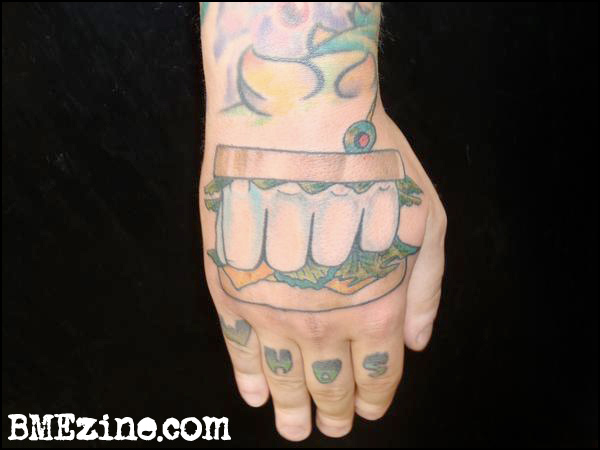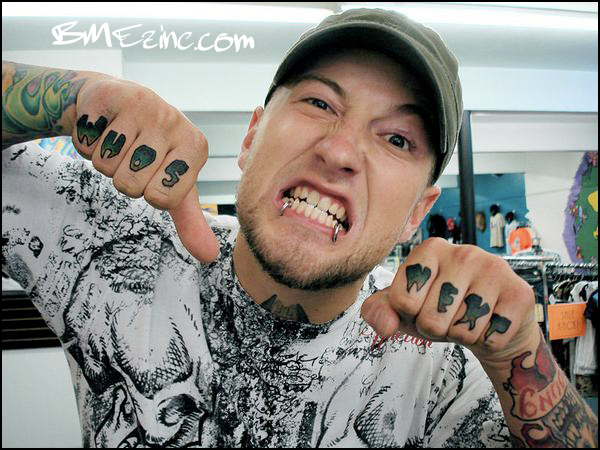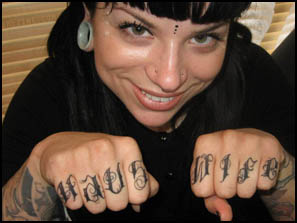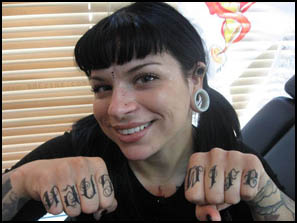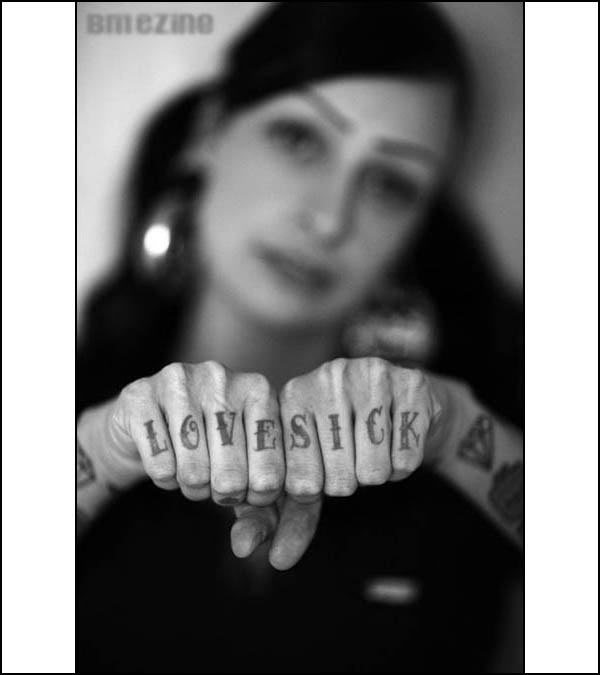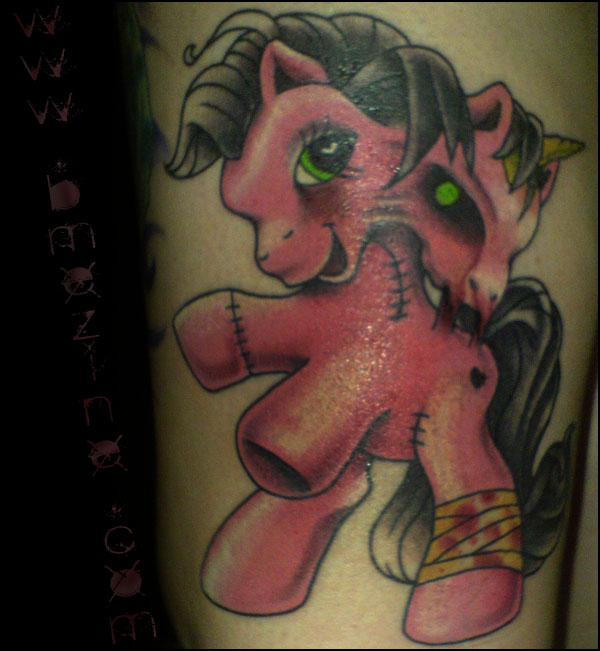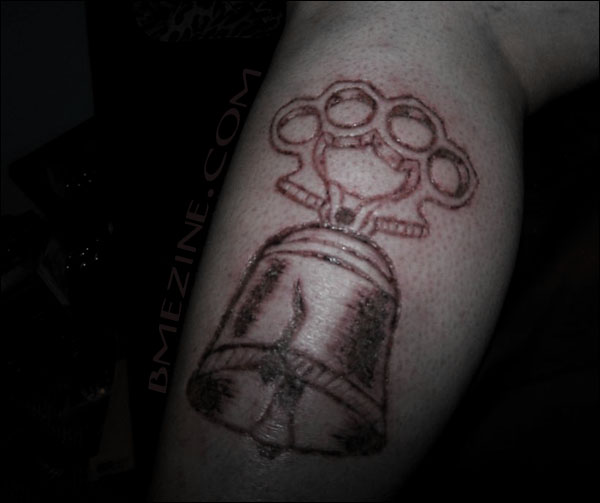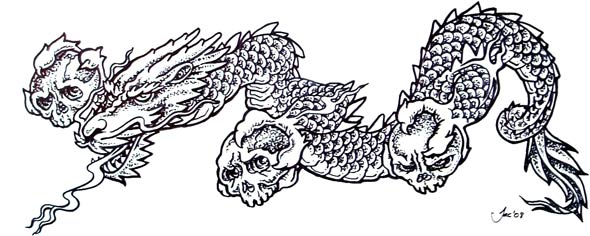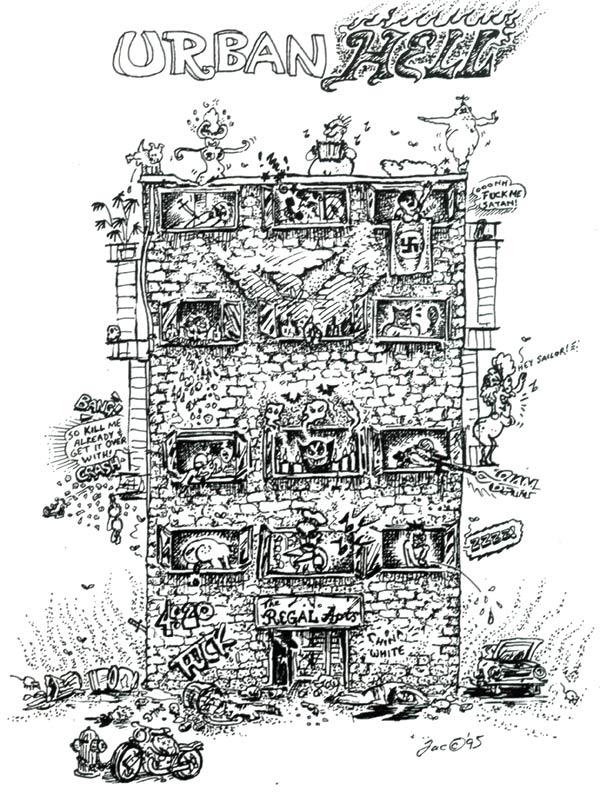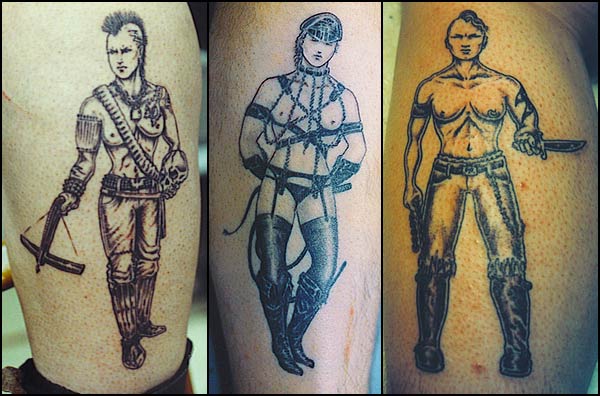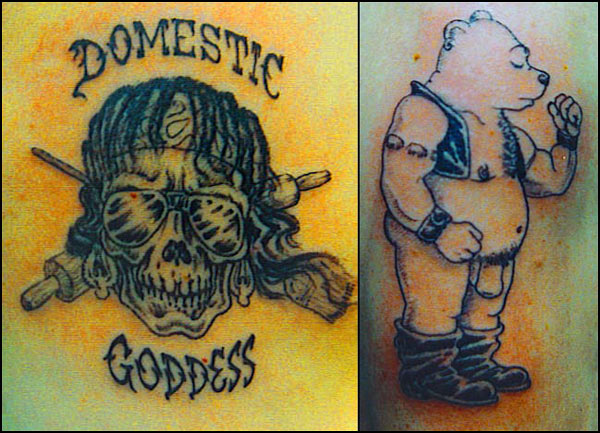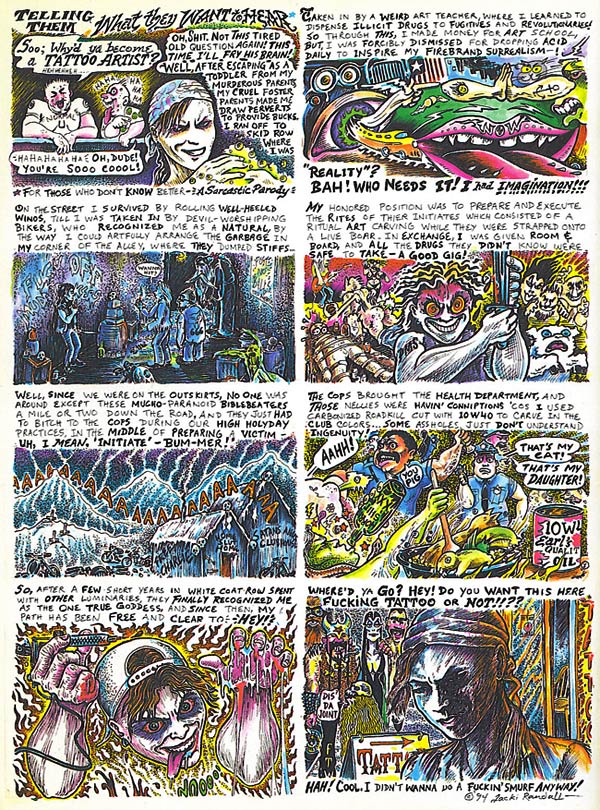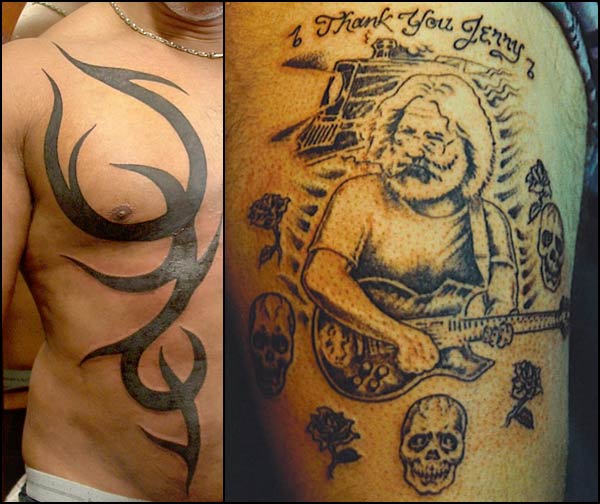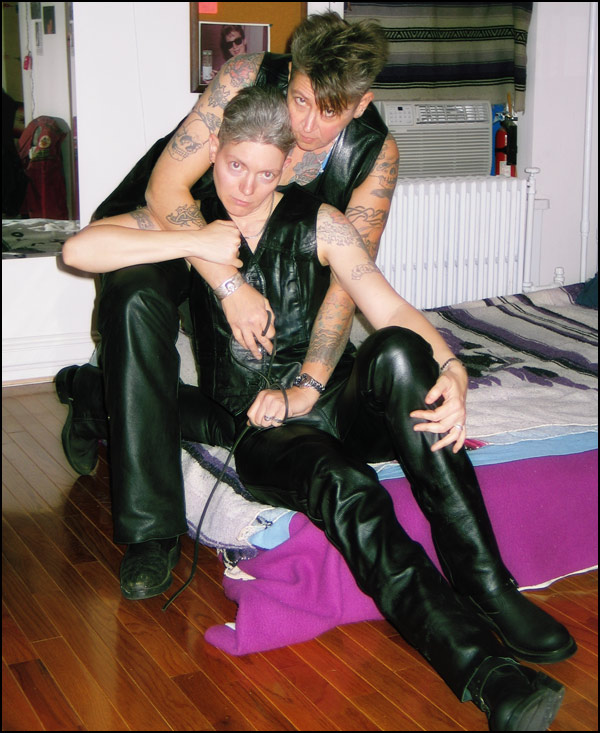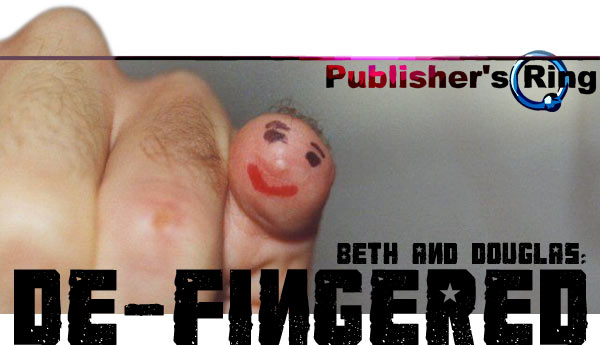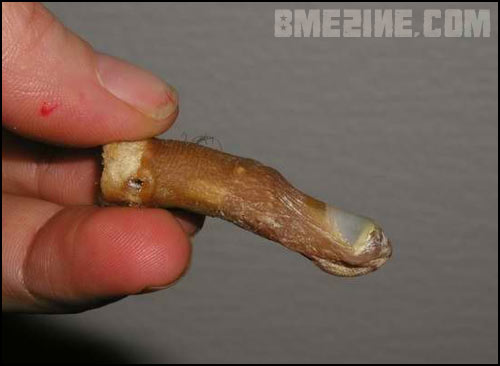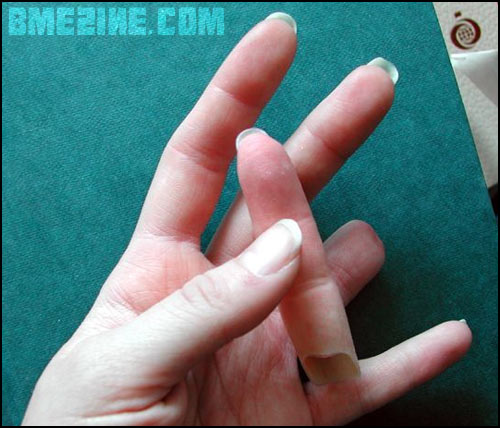|

Between all-out voluntary amputation, like Jason’s hand amputation story, and medically-dicated amputation from injury or disease, is a grey area of semi-voluntary amputation where amputation is chosen — often pushed for — to solve a medical problem that would not normally require amputation. Doctors often resist it, but the amputees persistence at a “quality of life” argument eventually lead to surgical intervention. In this set of interviews (all of which I started with the incorrect assumption that they were purely voluntary amputations) we talk to three such individuals, one who removed a toe, and another who removed his leg, and a third who removed a finger.
– Shannon
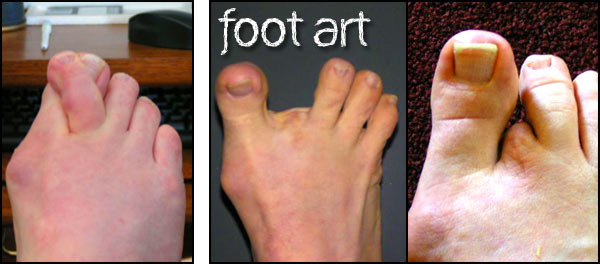
BME: Tell me a little about yourself?
I’m a person who enjoys “foot art”. That is, bunions, overlapped toes, feet that look different, and toe amputations.
BME: So not an interest in amputation per se, but just different sorts of feet?
Yes… My foot fetish started, I think, when I was a kid, probably seven or eight years old. Since then I always looked, searched, and observed different shapes of feet and toes — the more “odd” a woman’s foot, the more curious I became.
BME: Tell me about your foot.
In my case, the second toe always overlapped my big toe, but over time it overlapped more and more. I went to a foot doctor and asked him to remove the toe. It wasn’t a medical neccessity, and I liked the way it looked [with the overlapped toe], but I had to stand at work all day for years and the pain overcame the desire… The next step was to have it removed.
BME: Was it hard to convince the doctor?
The doctor wanted to straighten the toe, but the result would be a stiff toe and the procedure would be eight to twelve weeks. I didn’t want a stiff toe and didn’t want to lose the time… So, we agreed on the toe amp.
BME: To what extent was it something you had to do, and to what extent was it something you wanted to do?
It’s like the chicken and the egg… I’d say both… The desire was always there to do it but this made it possible. I liked the look of my overlapped toe but it was time to move on to a toe amp… I guess it would be “wanted to do”. My wife also had it done and she didn’t mind, so, “What the Hell”…
BME: Your wife also has toe amputations?
Yes, she had it done twenty years ago, and she adjusted to her toe amps. She had similar, overlapping toes, and it was easier to remove them than deal with the pain and time to rebuild them… We’re very busy people.
BME: Does she know you have a foot fetish of this type?
Yes, she knows and we share my foot fetish. Her feet have bunions — at one time overlapped toes — and now toe amps plus extras…
BME: How do people respond?
Not many people know about my toe amp, but some people stare at it when I go barefoot or wear sandals, more so than they did when my toe was overlapped… Their curiosity excites me.
BME: What was the aftercare and healing from the procedure?
The doctor told me to keep it covered until the next visit, but I just had to look and take pictures. The healing process was fast, and there was no pain from the “get-go”. In about ten days it was all over.
BME: What does it feel like now?
It feels like something is touching where the scar tissue is. I like it a lot. My bunion also got bigger, because my big toe took the place of my second toe. I’d have preferred it if the doctor removed all the excess tissue where the toe was, because one gets a pressure sensation where the tissue was left, so I returned to the doctor a year later and he did that. It now feels and looks much better.
I always loved feet and what I have seen with foot modifications, bunions and odd deformities all my life, amputation is my favorite “fetish”.
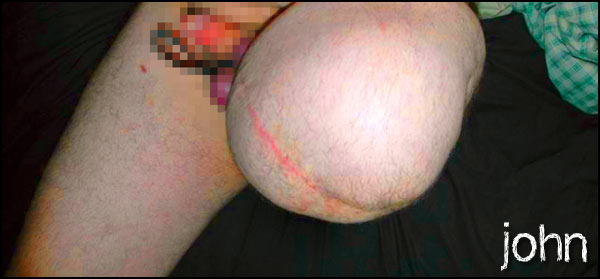
BME: Tell me a little about yourself?
I’m a 51 year old bi-sexual man with some ink and other body mods. I’m Ex-US Navy Sub Forces — “Deeper Longer Faster” — and happily married to a RN.
BME: Tell me about your amputation?
The procedure was done by a doctor and was a trans-femoral (above the knee) amputation of my left leg. It was a very difficult procedure actually as there was titanium hardware in the bone from prior surgery. They had to make a step cut of the tissues, avoiding previous scar tissue as much as possible. The step cut, if you took the leg and looked at it from the side was cut to look like a step. This allows a thick flap of meat and fat to form a cushion and also a good closure of the remnant limb. All the major arteries needed to be tied off as well as the nerves being cut. Also, tendons need to be reattached in a fashion that will help you walk with a prosthetic. Trust me, a leg amputation is not for an amateur to do! Slip up and, well, you can easily bleed out very quickly and not have any real mobility even with a prosthetic.
BME: What story do you tell about how your amputation?
Well, it depends on the person (LOL)!!!
Mostly I tell the straight out truth short version. The long version is what leads up to me deciding to do this.
Roughly six years ago I was hit head on and my left leg was shattered along with numerous other injuries. I almost died. I had lots of pain and the left leg never really healed. Trust me, after being in a wheelchair or on crutches for almost five years it gets tired real fast, especially if you are an active person like me. I went round and round with various doctors and got the song and dance “it’s a viable limb,” meaning, “yeah, it’s alive, so what if it’s useless.”
Total bullshit — typical of the attitude in medicine today. Seriously, it’s a double standard in medicine. We can keep a limb alive even though it will never be useful again, so we will and let the patient go through hell. It even comes down to a double standard in other areas as well. Women can get lipo, boob jobs, or reductions hysterectomies… mastectomies, hey no problem, no letters from a psych… just “can you pay?” Yet if a man wants an Orchi, well, he must be nuts — better get two Psych’s to say hey it’s okay… bullshit. Medicine has ignored the most important thing — your quality of life and only you can say what is best for that, not some white robed geek. I was fortunate that my personal MD knew of a vascular surgeon who takes that into account, so no psych board. I know many other amputees who went through hell before they got the surgery they needed to get on with life.
BME: What was your aftercare and healing process like?
Very painful and drawn out. The burning sensation was enough to drive me up a wall. Healing took about eight weeks for the initial period, and total healing almost a year. Getting comfortable was the hard part, especially in bed. You need to relearn sleep posture. Aftercare was like any other major surgery but with an exception — daily checking the stub with a mirror, looking for wound openings and tissue break downs. The process also was getting used to showering sitting down. The first time after staple removal I tried standing up — it felt like the leg was still there and down I went. That’s the hard part. You still feel the limb even though it’s gone.
Aftercare involved eight weeks of PT to re-strengthen the limb and my back for normal posture, and then another twelve weeks learning to walk again with the prosthetic and also to straighten my back out from years in a chair.
BME: What does it feel like now and how do you like it?
It’s painful many days… I have what are called neuromas. These are nerves that were cut but have regrown into ball-like structures that are very sensitive to heat, humidity, cold, and touch. But truth is, I feel great. I can walk again and enjoy walking along the beach like I used to. I feel whole again.
Most days I am happy with my decision — remember I elected to do this — but there are other days I wish the hell I had my leg back.
BME: Anything you would do differently if you did it again?
Yes, I would have done it much sooner then I did
BME: Are you at all interested in other amputations? You mentioned an orchi (castration)?
For me where I am in life an Orchi is a viable thing from several aspects. First off, I am prone to epididymitis due to a series of injuries to my testes. Seriously I have had two bouts in the last year and the pain is very exquisite — not the nice kind any way. Second, my partner has a very low sex drive and, well, masturbation just staves off the itch only so long. Even though I am bi I am monogamist so relief outside of the relationship is both not in my character or realistic. There have also been six cases of testicular cancer on my fathers side of the family developing around the age I am now. So from one view it would be health insurance so to speak. I also have no need to reproduce with my son grown and moved away as well as my daughter being a parent as well. No need to be a dad again for this kid, LOL. From an erotic point I also find it appealing to have a large degree of control of my sex drive and also find the whole thing a big arousal. Body image comes in as well I really never have felt totally comfortable with my testes, or for that matter, my birth gender as well. Latent Transsexual I guess. Seriously, when growing up Westerns were the big thing on the tube and while my male friends always wanted to play the cowboy or gunslinger, secretly inside I wanted to be the one rescued.
Remember the era I grew up in SRS was a new thing with only one in the States at the time as far as we know Christine Jorgensen and Stonewall was a recent event.
BME: How did you decide to go through with amputation?
Almost five years getting my mind set right and it still was a hard thing to do. I mean, sure, mine was sort of driven by a health need, albeit I could have gone on without having it done, but it is not a thing to take lightly. I have seen some of the photos of folks taking chisel to a joint or toe or more, but I bet most of them did not think it through long term. An amputation is not like ink in that you can laser it off or remove the implant or jewelry. Once that part is gone, that’s it, game over, for that part of the body.
There are also many things to research before doing this things like “Phantom Pain” — for example your left toe hurts like you stubbed it but it’s not there. “Phantom limb” — your leg is folded under you sitting on couch but it’s really not there. Then there are neuromas — nerves that have regrown into a ball… very very painful! Then there are the looks you get. People staring, but when you catch them, they avert their eyes — they are sackless assholes staring like that.
BME: Would you call what you did a “voluntary” amputation, or something that was medically required?
It was a completely voluntary amputation. I wanted to try to have some form of normalcy again. I was hoping to end the pain I was in 24/7 and get off the pain killers that were fogging my mind. Plus the messed up leg was to me an eyesore on my body. I also couldn’t really do anything prior to the amp. It was pure hell sitting and not being able to take part. Well, I did get some normalcy back. I like my body again, but I still have pain… oh, well, trade offs… LOL.
I had to more or less kick and scream and brow beat people to have it done. The Doctors were not willing to do the surgery as it was not a life threatening issue and the soft tissues were healthy. The Femur itself had never healed completely. As far as they were concerned it was healthy for me to spend my life in a wheelchair or get around on crutches. It really took a lot of effort to get the amputation. With the exception of one doctor they had “ethics” issues cutting off what they perceived as a healthy (LMAO) limb.
BME: I definitely understand what you mean though on the pain issues — I had a surgery (bone tumor removal) that messed up the nerves in my leg, and while I’m physically fine, I’m in constant pain from it and have thought for a long time about whether it would be better to amputate it (not that a doctor would for me, and realistically, the phantom pain could easily stay after an amputation).
You could do the route that I took and keep telling your primary care MD that the pain is intolerable, pain med’s are not an option, and that it is affecting your overall quality of life. I was fortunate that when I relocated to this area and my new primary care MD is an extreme advocate of quality of life for the patient. Many MDs are still of the mindset that as long as the limb is viable they won’t do it even though the patient’s life is miserable. There are patient advocates around — a web search can help.
Phantom pain is a weird thing — it is totally different then what I even thought. Best thing I can describe is it feels like you stubbed your left toe yet the toe is gone on up to cramps and stuff in the limb like it is still there it is not in the remnant area but below that. Now what I have is different — that is the neuroma where the nerves have regrown into a ball. Phantom pain can be controlled and eliminated by several means from using a mirror to trick the mind to scratching or rubbing the non existent limb. Yeah it sounds odd, but it works and it can also be controlled with acupuncture. Besides, in 99% of the cases it is not a constant thing, and for most people well it stops after a while once and for all.
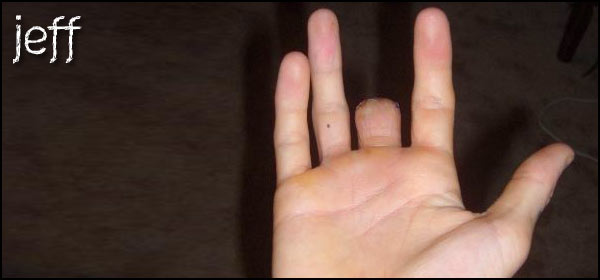
BME: How old are you?
I’m 25 years old and currently enrolled in welding school in Manhattan.
BME: What lead up to your amputation?
In june of 2005 I was working for Steinway and Sons, at their piano factory in Queens. My hand slipped into one of the cutting machines and cut across the tops of my knuckles on my middle and ring fingers, severing the tendons. I had surgery on them and regained most of the use of my ring finger but the joint on my middle finger fused due to the bone being damaged as well. About eight months later I had surgery on the middle finger again to cut out the fused part and try to get my finger to bend. After months of physical therapy, my finger wouldn’t bend. It was permanently crooked, swollen, purple, and painful. I was always getting it caught and banging it on stuff. There had been too much damage and it had sat too long without bending to do anything else. I went to see a different doctor, as the first doctor refused to amputate, and he immediately approved the surgery. It had been over a year since the accident. On September 19th of 2006 I had the finger amputated.
BME: How was your finger removed?
I had it amputated by a doctor in Massachusetts. They knocked me out and cut through the PIP joint (proximal interphalangeal joint). the doctor left a flap of skin on the bottom of my finger at the joint that he then pulled up and over the joint and sewed it to the top of my finger to seal it off.
BME: How was aftercare and healing?
Aftercare was easy. My entire right hand was bandaged for about six weeks. I wasn’t allowed to remove the bandage until I went back to the doctor’s. The healing was pretty intense — pain like I had never felt before and an incredible itching deep inside the bone. The first few nights were particularly rough. I had been prescribed vicodin, but it didn’t do anything and I pretty much laid there in bed cradling my hand until I eventually fell asleep — passed out. After the first couple of weeks it hurt less and less, but it was still painful, itchy, and very tender. Once the bandage came off, the stump was swollen about twice the size and I had to wear a little silicone sleeve over it to make sure I never accidentally bumped it on anything… which still happens a surprising amount considering it’s tucked away between two full fingers!
I also had ghost sensations. Pain was actually not all too common. The biggest ghost sensation I had was an itching in the tip of my finger. I’d always reach out to scratch it and then realize what it was, and there was nothing I could do to stop that. I did occasionally have ghost pain sensations and they are really easy to deal with. I couldn’t do anything to alleviate the pain so it didn’t matter that it was happening on a body part I no longer had. I also occasionally had the sensation of my fingertip touching something when the rest of fingers did. The first time it happened was when I went to pick up a glass. I distinctly felt my middle finger tip touch the glass as I wrapped my real fingers around it. It was a weird mental trip for sure. I had been expecting the other ghost sensations, but not that.
BME: What does it feel like now that it’s well healed?
Now it’s hardly noticeable. But to be fair, it was hardly noticeably as soon as the initial pain went away. My middle finger had been immobile for over a year before it was cut off. I was used to not being able to use it for anything, so once it was amputated I never had a period of adjustment. It was a relief once it was gone. I’m much happier now that it’s been removed. I see it as a positive thing and have fun with my stump. I have a tattoo on my side that is a portrait of my hand missing the finger, “MINUS ONE” is tattooed across my knuckles, and I wear the mummified finger around my neck.
BME: Anything you’d do differently?
I’d try to get it done a lot sooner — that year with it still attached was hell.
BME: Do you have any interest in further amputations?
Probably not completely voluntarily, but I do definitely have a much larger interest in amputations now. I’ve thought about cutting off the other middle finger to be symmetrical, but I doubt I’d ever go through with it. It’s kind of funny it happened. When i was in high school, an anatomy teacher I had spoke of a guy he knew from when the teacher worked in a hospital. The guy was a mechanic and had damaged his ring finger several times. It got to the point where his ring finger was useless and he had very little control over it. He ended up having his ring finger amputated all the way into his palm and had a four fingered hand, with no spaces or stumps. i always loved that story and thought it would be awesome to have a four fingered hand. That, and all the exposure through BME and people I’ve met with amputations — my landlord is missing the same finger as me, as well as part of his index finger. That all made it really easy to have my finger cut off.

Shannon Larratt
BME.com
|
